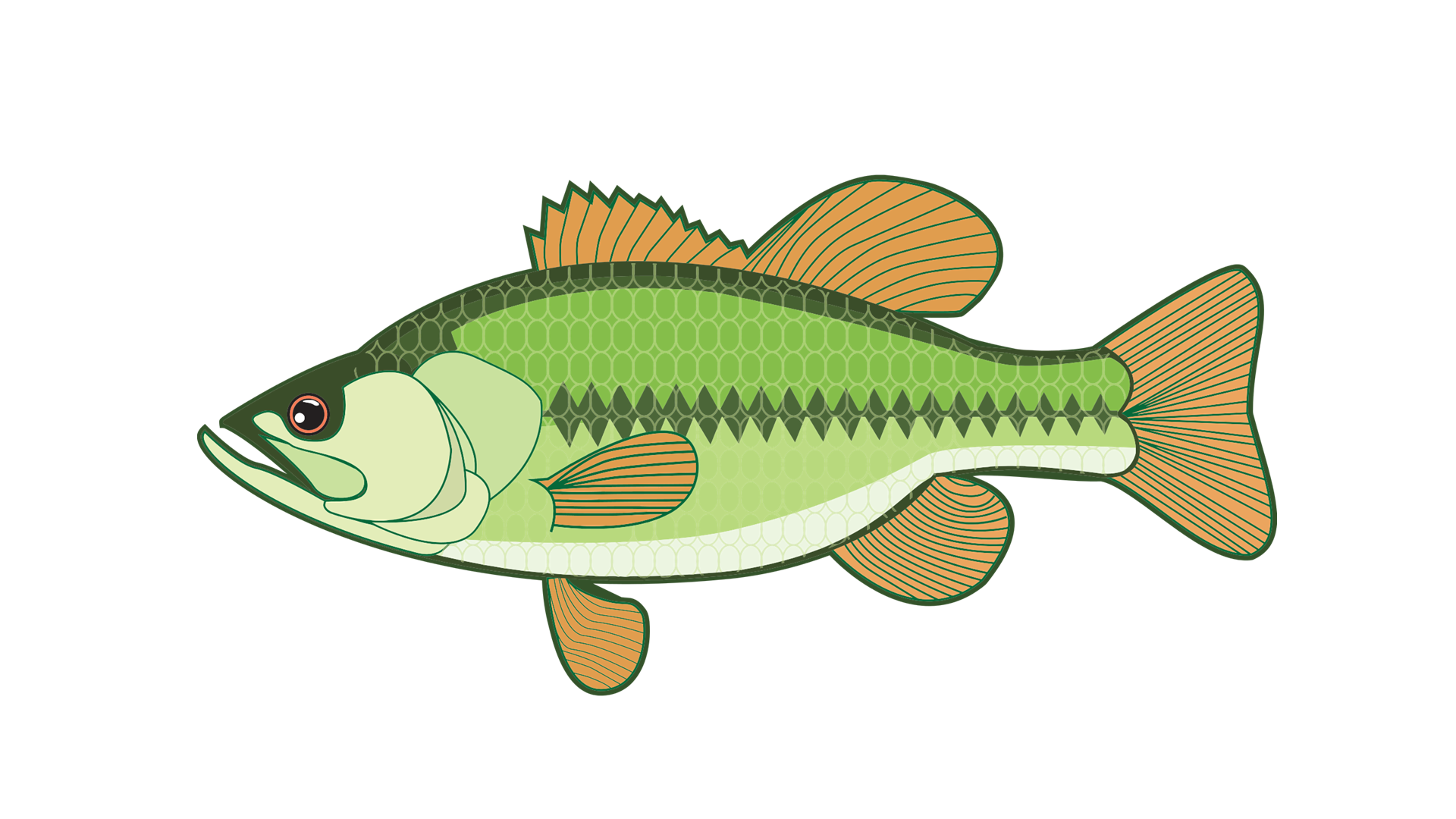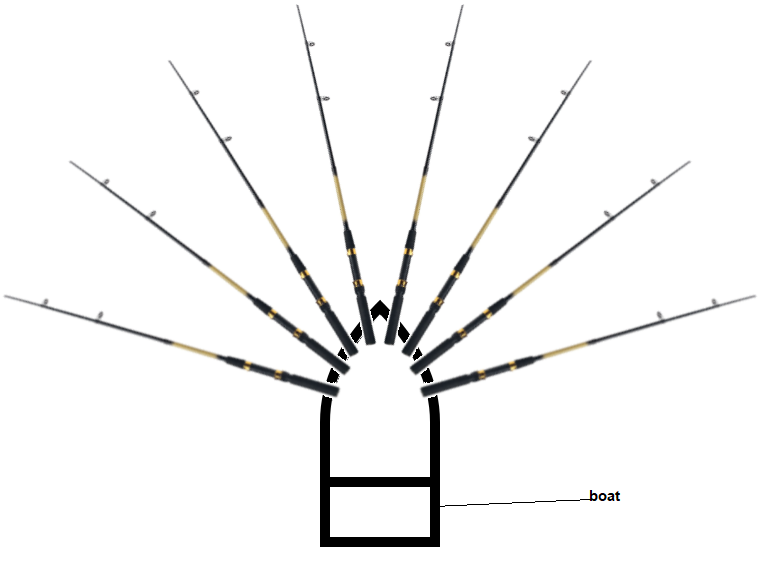What this rig is all about:
Crappie are primarily a recreational freshwater fish that inhabit, primarily, the lakes and rivers in the southern/southeastern U.S. There is a specific technique that has been popular to land crappie called spider rigging and it is described by splaying out anywhere from 6-12 fishing rods off of a boat. To learn about the spider rig setup ranging from the length of the rod to baiting and lures to depth in the water column, continue reading to maximize your chances of catching a monster crappie.
Here is a list of materials/items that you will need to make this rig:
Links include pricing info on Amazon and are the suggested products for this rig.
- Crappie Rod Holder System
- 12-16 foot rod
- 10 pound yellow monofilament main line
- 6 pound mono leader line
- Snap swivel
- Torpedo sinker
- ⅛ ounce jig head
- 1 inch minnow artificial bait
In a top down view, this is what the rod setup of a spider rig looks like.
How to use this rig:
One important aspect to the spider rig setup is the length of the rods that will be on the rod holders. Ideally, they should be 16 feet long but if you’re just starting out, a 12 foot rod will be a bit more manageable.
The reasons for the long rods include:
- Having a quieter approach to the crappie. The fish can be quite skittish so you want to be able to approach them while still being far away.
- To minimize snagging. Crappie hang out around stamps, weeds, rocks etc so you want to minimize reeling in if you can. With long rods you can just drop the bait right on top of them.
For murkier, stained waters it is advised to use brighter colors like chartreuse to help stand out to the crappie. However, that is a good rule of thumb and you should always experiment with the color of the bait. Spider rigs usually consist of 8 rods held in place by these rod holders. You can either rig them all the same or you can mix and match colors to see what works for that day.
A depth finder is important when using the spider rig so that you can drop the rigs down to the proper depth. What you want to set the depth at is for fish up in the water column and that could be anywhere from 2 feet from the bottom to 2 feet below the surface.
The reel for this rig doesn’t really matter. It could be 1500 to 2500 in size.
The reason for the yellow colored (or any highly visible) main line is that sometimes the fish will bite and move sideways. You want to be able to see that to prevent any tangling of lines and or the fish moving to some place you don’t want it to. The bright color on the main line will help with this and at that point, you need to set the hook and reel in the crappie.
The weaker mono line is to allow the leader to break off in the event of a snag.
This specific Carolina rig is for trolling at .3-.4 MPH or it can be used just regularly without trolling.
The next section will be a step-by-step guide to setting up a single rod on the spider rig and can be repeated for the rest of the rods.
Setup guide:
- The first step is to attach your snap swivel to the brightly colored main line. I would recommend a palomar knot. Check out this video for a palomar knot tutorial. However, any secure knot will do.

- Snap the torpedo sinker onto the snap swivel.

- Use enough 6 pound monofilament line for the leader so that the leader ends up being anywhere from 12-18 inches. Tie the one end to the torpedo sinker
- Finally, tie the other end of the leader line to the jig head and feed the artificial bait through. Or you can use this jig head and hook onto it a live minnow for a different presentation. The final rig should look like this:

Go out there and test it out! Let me know if this rig is working for you and rate it at the top of this article. Check out this YouTuber using a spider rig to catch crappie:


One thought on “Spider Rigging for Crappie”
Comments are closed.